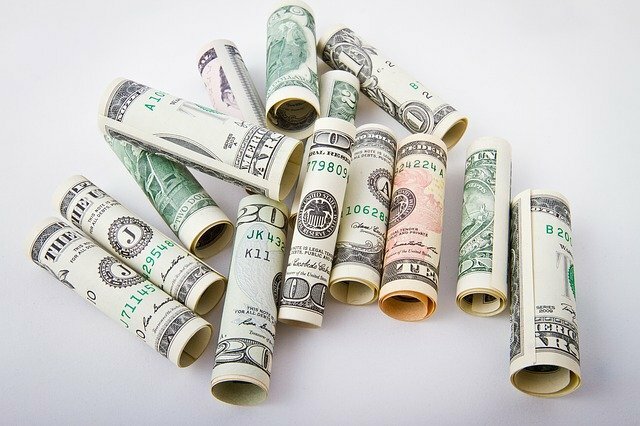Financial accounting is a tool with certain limitations regarding the internal analysis of organizations. cost accounting as a complement to financial accounting, allows you to record, quantify and group information to evaluate the efficiency and effectiveness of the company's performance. Where the cost center represents a clear and delimited orientation of the production of costs, grouping them into units of control and responsibility.
Converting the importance of the cost function of the organization, in something more strategic than operational, since thanks to the information, control and decision making, managers define the direction and permanence of the company in certain cost centers or cost systems.
Advertisements
To be aware of how the company expenses it is essential to keep cost accounting. Among other aspects, such accounting allows classifying the different expenses incurred by the company, in cost centers that should be controlled. The proper distribution of expenses in cost centers is key to the control of any company.
In this article you will find:
What is a cost center?
It is a segmentation that generates costs for the organization, which add benefit or utility indirectly. It does not operate with the intention of generating income directly, it is the part of the business that generates costs without profit.
Advertisements
As an example for understanding, a cost center can be a vehicle or even a department. The vehicle generates costs for insurance, fuel, maintenance, repairs, etc., and a department generates costs for salaries, stationery and supplies, etc. that do not bring direct economic benefit to the company.
Cost centers they are used for the differentiated allocation of overheads.
Advertisements

Classification of cost centers
They can be divided into main and auxiliary.
Advertisements
- The main ones: They are those who intervene directly in the manufacture of the product.
- The auxiliaries: They are indirect costs.
The costs assigned to auxiliary centers can be distributed consecutively between the main centers and then be distributed among the products.
Cost centers can be classified:
Advertisements
- Administrative cost centers (CCA): They are those departments that perform a function related to the direction and control of the general operations of the company. For example: General Management, Planning Deputy Management, Finance and Administration Deputy Management, among others.
- Cost of Service Centers (CCS): These are those departments that perform a function of supplying support to others cost centers (administrative, production and sales), so that they develop their activities in a efficient. For example: Warehouse, maintenance management, laboratory, canteen for employees, medical service, etc.
- Productive cost centers (CCP): These are those departments that carry out the transformation of raw materials, that is, they are directly involved in the production process. For example: processing plant, paint department, assemble, packaging, labeling, etc.
- Cost of sales centers (CCV): These are those departments that carry out marketing functions for finished products. For example: Sales Manager, National Sales Manager, Export Manager, etc.
Importance of cost centers
- As a strategic tool, it allows the presentation of operational performance results, in order to identify weaknesses and strengths, for decision making.
- As a tool for planning and controlling income and expenses, establishing a point of comparison with what is budgeted and estimated.
- Allows the analysis of variations in the performance by department according to the objectives, so that corrections can be carried out to improve the results.
When speaking of cost unit, reference is made to the concept of operating unit, in relation to which the Costs will be grouped. They can be accumulated by accounts, jobs, processes, products or other business units.
In general they have the following purposes:
- They provide reports on all costs to measure profit and evaluate inventory.
- They offer useful information for controlling the operations and administrative activities of the company.
- They provide information to support strategic planning and decision making.
However, for such planning and decision-making purposes, the information should be reorganized and supplemented with other relevant business and economic reports.
Cost system
A cost system is the set of procedures to calculate the cost of the different relevant activities in the production process.
According to the treatment
- Fixed cost: Includes all costs incurred in the manufacturing process of the product, The The main characteristic of this system is the distinction made between the product and the costs of the period. These represent the ability to produce or sell. The fixed manufacturing costs Totals remain constant regardless of production volume.
- Variable costing: They are established for manufactured products, the distinction in this system is that variable costs they are presented directly in the finished product. Total variable costs increase in proportion to the changes that occur or occur in production.
According to the form of concentration
- Costing by orders: It is used in the manufacture of special orders for certain clients and under certain agreements.
- Process costing: It is used for repetitive and diversified production processes, despite the fact that fairly uniform items are produced.
According to the costing method:
- Historical or resulting costing: These are costs that are determined after production has concluded, by virtue of the actual inputs used in production. It can be used in order costs and process costs.
- Default cost: These are those costs that are calculated based on estimated consumption. Within these models, two systems are identified:
- Estimated cost: Applies when working on production orders or sales orders. These costs are set based on previous experiences. Its essential objective is the estimation and fixing of a sale price.
- Standard costing: Applies when working through production processes. This type of cost measurement is usually carried out on a scientific basis. Its objectives are to measure operational efficiency, in the same way to establish the sale price of finished products.
In either case, the variations are considered inefficiencies and are settled by gains and losses.


